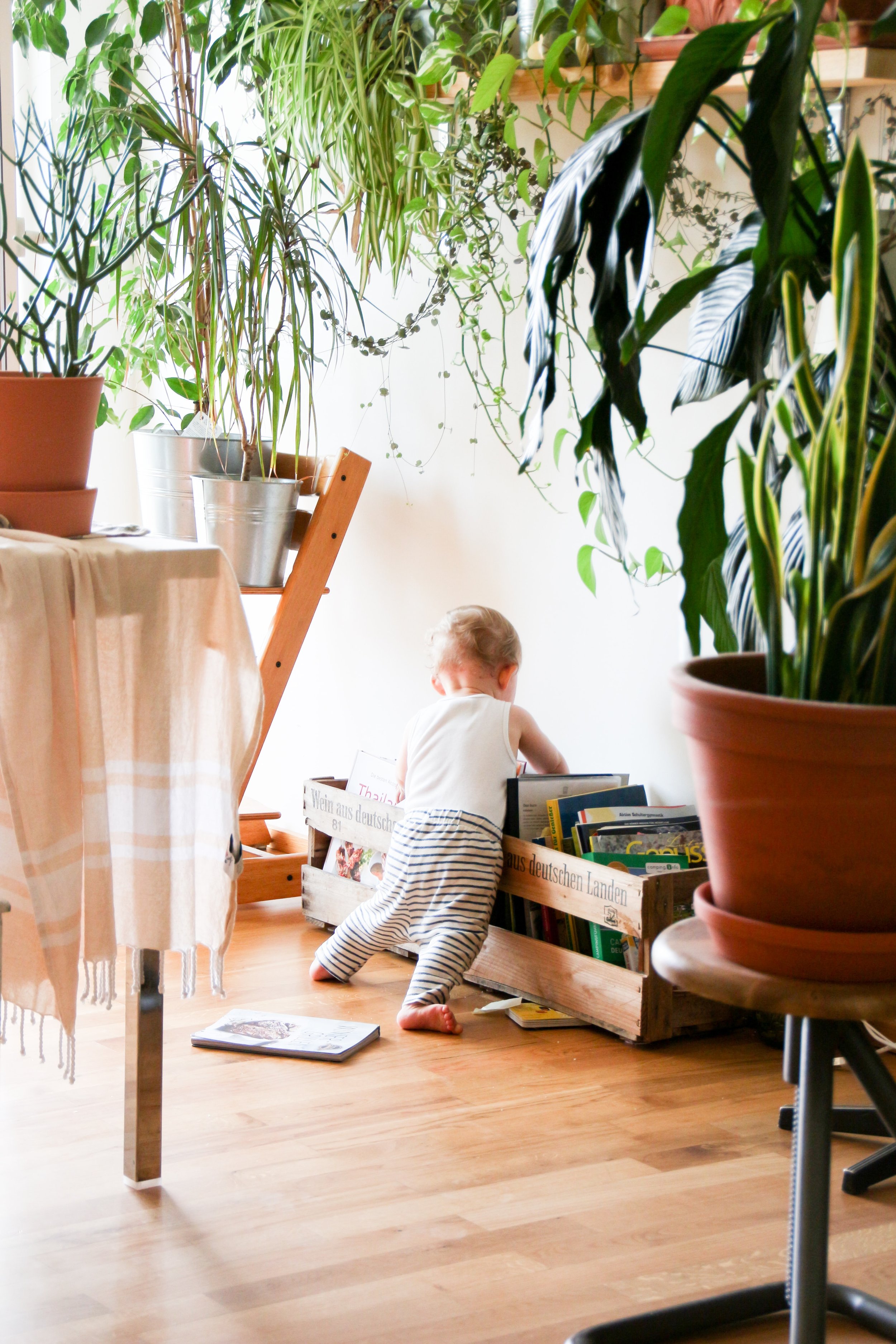Psychology Writing Tips: Using Attachment Theory in Character Development
How to use attachment theory in fiction
Have you ever wondered how to use psychology to create authentic relationships between your fictional characters? How to strengthen that notorious 'emotional wound' and heighten the character conflict? Well, now you can. Attachment theory can help you build a strong foundation for your protagonist's backstory and create a lifelike cast of characters in your novel.

What is attachment theory?
In the 1960s, Psychoanalyst John Bowlby proposed the idea that babies are born with an instinctual desire to connect with other humans. In the first year of life, they are driven to establish a secure attachment relationship with their primary caregiver, usually the mother. For attachment is the enduring emotional bond that develops between the baby and the primary caregiver.
"Attachment is a reciprocal system of behaviors between an infant and a caregiver—generally the mother. The term reciprocal is apt because not only does attachment affect the child's behavior (for example, moving closer to the mother when stressed), but also affects the responses of the mother, who emits care-giving responses in the presence of signals from the infant." - John Bowlby (1969).
So, in these terms, attachment is a two-way system. The mother (or another primary caregiver) sends out signals to the infant (for example, whether it is okay to come in for comfort or okay to explore the world), and the infant responds to these signals which the mother again responds to, and so on.
In attachment theory, a child needs its attachment system (help-seeking behaviour) and exploratory system (interacting with the world) to be in harmony. When there is balance, secure attachment occurs, when the scale is tipped off centre (toward attachment dominance or exploration dominance) it creates an insecure attachment. When under stress or separation from their caregiver, babies develop strategies to connect with their parents, which is guided by how the parent responds to their needs.
"Attachment predicts the ability to relate to many others, to establish trust, to form and retain friendships, and to engage in mutually satisfying emotional and physical relationships." John Bowlby (1969).
Are you still with me? Don't worry, that's most of the theory out of the way. Now the next part is really interesting.
Building on Bowlby's original work, psychologist Mary Ainsworth conducted an experimental procedure in the 1970s with about one hundred American parent-infant dyads. It was called The Strange Situation and it tested how an infant responds to a series of separations and reunions between the mother (or another primary caregiver) and infant. After the experiment, the trained professionals observed and analysed the results and classified the infants according to one of four attachment styles: secure, insecure-avoidant, insecure-ambivalent, and disorganised.

Attachment styles in infancy
As we go through these attachment styles, think about what kind of relationship your protagonist may have had with their primary caregiver and how this may affect their future relationships.
Secure attachment style
Child: In the strange situation, the child cries when separated from their parent, turns to their parent for comfort when they return, and usually wants to be held until they are resettled and continue to play.
Parent: The parent of this child has provided predictable and consistent responsive caregiving. The child feels worthy of love, learns to manage their emotions healthily, and ask for help when needed. The parent is comfortable with the child approaching them for comfort and when the child goes out to explore.
Adult: The child with a secure attachment style usually becomes an adult who is independent, optimistic, and self-reliant.
Insecure avoidant attachment Style
Child: In the strange situation, the child does not cry when the parent leaves the room and they focus their attention on playing. They either avoid the parent or turn away from the parent when they return.
Parent: The parent in this dyad, finds it difficult to provide physical comfort when their child cries and tends to downplay the child's needs (e.g. saying "you're okay). The child learns to hide their feelings so they don't appear needy and they act as though they don't need their caregiver.
Adult: As an adult, a person with an avoidant attachment style presents as perfect and may downplay their struggles. They may also present as hostile or anxious. They don't easily depend on others and want others to believe they are fine, even when they aren't.

Insecure ambivalent attachment style
Child: In the strange situation, the child is very upset when the caregiver leaves the room and doesn't settle easily, even when the caregiver returns. The child may then show hostility toward the caregiver, or seek out the caregiver but then repute any attempts the caregiver makes to comfort them. There is a push-pull pattern in this relationship.
Parent: The parent in this dyad it typically inconsistently available. The parent does enjoy closeness with their child, but sometimes they are distant when the child turns to them for comfort, and when the child is exploring, the parent may be intrusive. This leads the child to become overwhelmed with their emotions and may tend to exaggerate their distress to get their parents' attention.
Adult: As an adult, a person with an ambivalent attachment style presents as anxious, tends to become overwhelmed by negative emotions, and is sensitive to rejection. As they may be perceived as 'needy,' this can place strain on their relationships.
Disorganised attachment style
Child: In the strange situation, upon the parent's return, the child may freeze or appear frightened. They may also show a mixture of avoidant or ambivalent behaviour.
Parent: The caregiver in this dyad tends to have unresolved past trauma or may experience difficulties such as mental health issues, substance abuse problems, or domestic violence. In this case, the parent may be seen as unpredictable and/ or frightening.
Adult: As an adult, a person with a disorganised attachment style may be controlling and engage in unhealthy relationships. This population of people are also at higher risk for addiction and/ or mental health problems.
It is worth noting, in the general population, attachment classifications in infancy are spread as follows; secure (55-65%), avoidant (20-30%), ambivalent (5-15%), and disorganised (10-18%).
How to apply attachment theory to fiction
What does all this mean for your character? Hopefully, you have an understanding of how relationship patterns in our early life can influence how we form relationships and cope with stress in our adult lives.
Of course, there are mitigating factors. Not everyone who has a parent with a particular parenting style will go on to display the corresponding attachment style. It can depend on birth order, different relationships with different parents, having significant other caregivers in their life (like relative or teacher), or trauma/ grief loss, etc.
Depending on your story, you may be able to use this information to track back your protagonist's early life, or you may use early life to fast-forward how it may look in the present day.
Character Interview
The following questions are adapted from the Adult Attachment Interview (AAI) which could be used to further explore your protagonist's attachment style and early experiences:
1. Choose five adjectives or words that reflect on your relationships with your mother when you were a child aged five to 12 years
2. Choose five adjectives or words that reflect on your relationships with your father when you were a child aged five to 12 years
3. Which parent did you feel the closest to and why?
4. When you were upset as a child (for example emotionally upset or physically hurt), what would you do?
5. What is the first time you remember being separated from your parents? How did you respond? How did your parents respond?
6. Did you ever feel rejected as a young child?
7. Were your parents ever threatening with you in any way?
8. Were there any other adults that you were close to when you were a child?
9. Did you experience the loss of a parent or other close loved one when you were a child?
10. What is your relationship with your parents like for you now as an adult?

Final thoughts...
Irrespective of our early experiences, we all have our strengths and weaknesses. This is important in forming an authentic character. So, someone who has an avoidant attachment style may be great at keeping their emotions in check during a crisis. On the other hand, it makes opening up to romantic partners difficult. Someone with an ambivalent attachment style who likes to feel needed may participate in jobs or activities where this need is fulfilled; they present as very caring and kind. You may want to look at what kind of professions may suit these styles too.
Also, keep in mind how your protagonist interacts with other characters in the story. An avoidant person may find the dramatics of an ambivalent style very frustrating and someone who is ambivalent may find an avoidant style cold or detached. That person may not actually be dramatic or detached, but our past experiences influence how we perceive other people. You may want to play around with how these styles may present when your protagonist interacts with their parents, or partner, or their own children.
It's also worth noting, that our attachment needs are activated when we are under stress, so even if we are doing relatively okay in most domains of our life, a stressful event or relationship problem can draw up past insecurities. You may find your protagonist is highly successful in their profession but when they interact with their parents or experience a relationship breakdown they completely fall apart- or they fall into old patterns.
Attachment theory can provide a really strong foundation for character development in the fictional world. Our early childhood experiences do affect our adult lives and if we harness this in fiction we can create a story full of conflict and tension that keeps the reader not only engaged in the story but also invested in the characters until the very end.
Have you ever explored attachment and relationship styles in your character development?
Want posts like this direct to your inbox? Enter your email address below.
References:
Ainsworth M. D., Blehar M., Waters E., & Wall S. (1978). Patterns of attachment: A psychological study of the Strange Situation. Hillsdale, NJ: Erlbaum. [Google Scholar]
Bowlby J. (1969). Attachment (1st ed.). London, UK: Penguin. [Google Scholar]
George, C., Kaplan, N., & Main, M. (1985-1996). Adult Attachment Interview (third edition). Unpublished manuscript, Department of Psychology, University of California, Berkeley.
Karen, R. (1990). Becoming Attached. The Atlantic Monthly.https://www.literacyta.com/sites/default/files/sources/14014/14014.pdf
Lyons-Ruth K., Bureau J. F., Easterbrooks M. A., Obsuth I., Hennighausen K., & Vulliez-Coady L. (2013). Parsing the construct of maternal insensitivity: Distinct longitudinal pathways associated with early maternal withdrawal. Attachment & Human Development, 15, 562–582.
Mares, S., Newman, L., & Warren, B. (2011). Clinical Skills in Infant Mental Health: The First Three Years (2nded). Camberwall, VIC: Acer Press.

